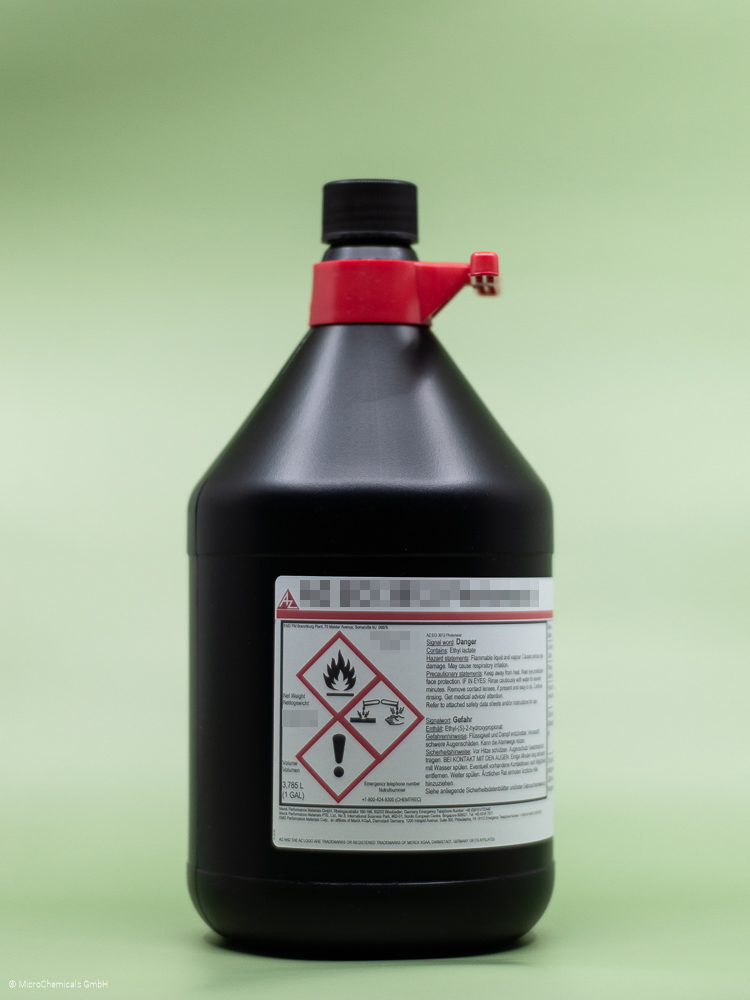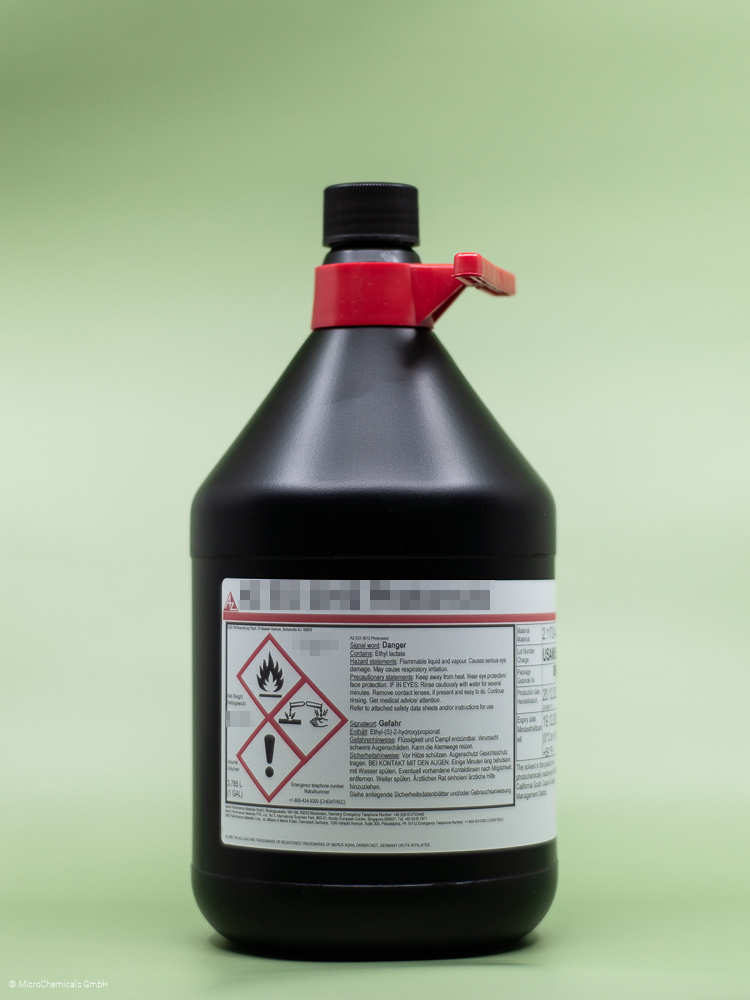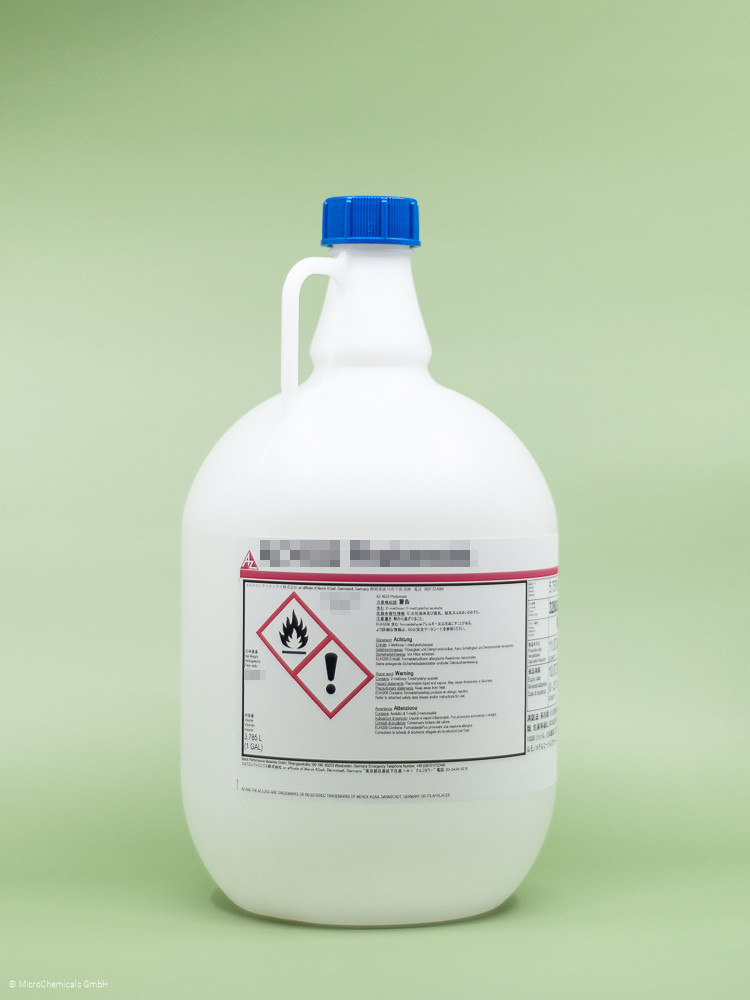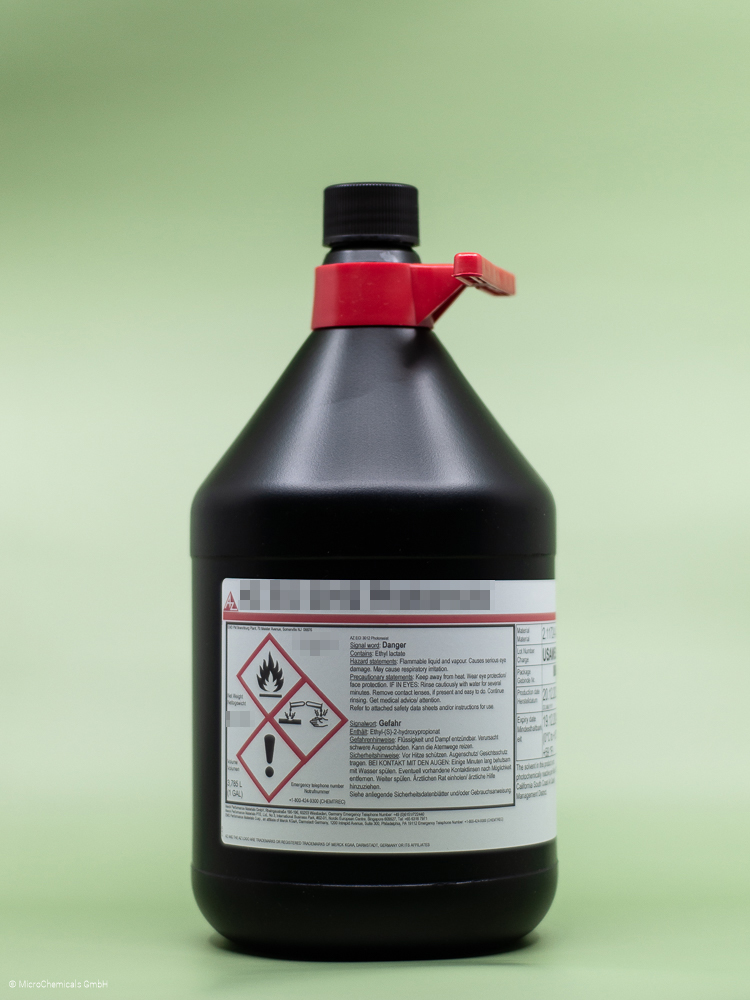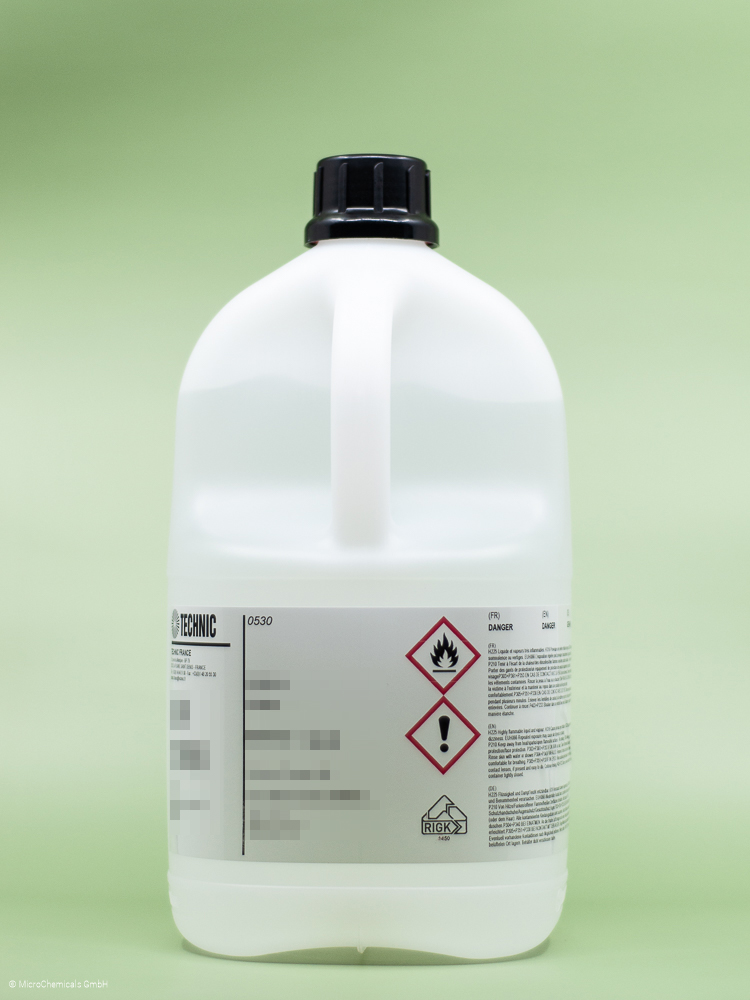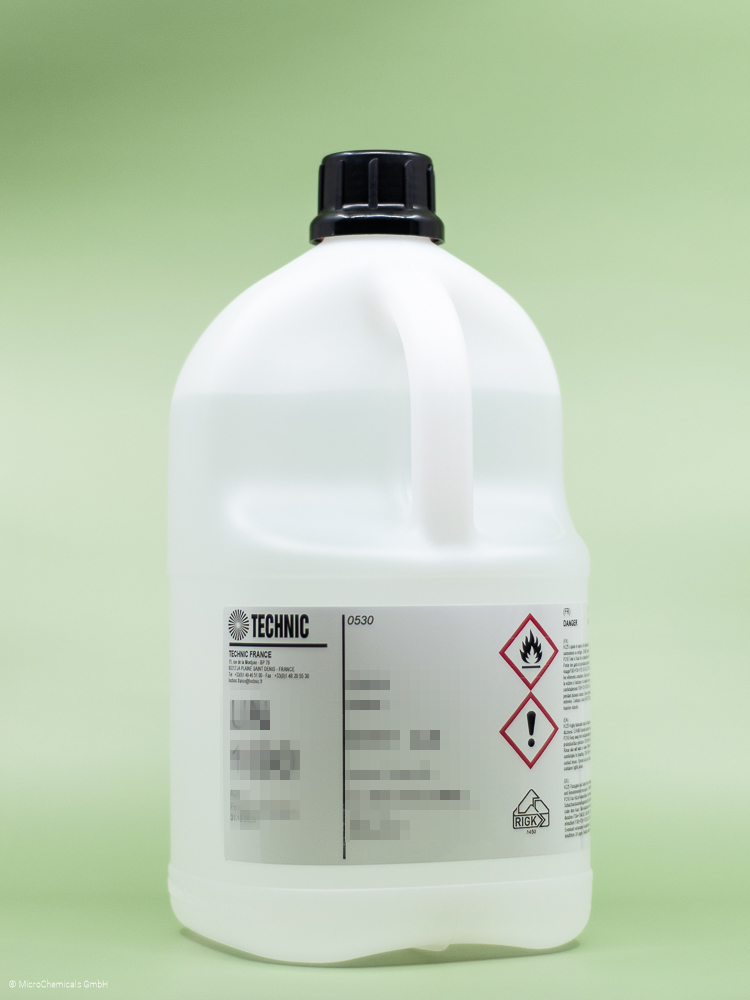AZ P4110 Photoresist - 3.785 l












Product information "AZ P4110 Photoresist - 3.785 l"
AZ® P4110
Positive Thick Resist - AZ® P4110, AZ® P4330, AZ® P4903, AZ® P4620
General Information
The AZ® P4000 positive resist series with its members AZ® P4110, AZ® P4330, AZ® P4620 and AZ® P4903 have two main characteristics: An improved adhesion to all common substrates for a higher stability for e.g. wet etching or plating and a lower photo active compound concentration, which allows the application of thick and very thick resist films (approx. 1 - 30 µm). This resist series have a medium thermal stability and can be developed with common KOH or TMAH based developers.
Product Properties
- Resist film thickness: 0.9 - 1.3 µm
- Steep wall profiles, high aspect ratios
- Sensitive to g-, h-, and i-line
- Recommended developers: KOH-based (e.g. AZ® 400K) or TMAH-based (e.g. AZ® 2026 MIF)
- Standard strippers (e.g. AZ® 100 Remover, TechniStrip P1316)
- Thinner and edge bead remover: AZ® EBR Solvent or PGMEA
Developers
If metal ion containing developers can be used the KOH-based AZ® 400K in a 1:4 dilution or the finish diluted version AZ® 400K 1:4 (for higher resist film thicknesses 1:3.5 - 1:3 diluted possible) is a suited developer. If metal ion free developers have to be used, we recommend the TMAH-based AZ® 2026 MIF developer (undiluted).
Removers
For non cross-linked resist films the AZ® 100 Remover, DMSO or other common organic solvents can be used as stripper. If the resist film is cross-linked (e.g. by high temperature steps > 140°C, during plasma processes, such as dry etching, or during ion implantation), we recommend the NMP-free TechniStrip P1316 as remover. AZ® 920 Remover can be a good choice as well in case of harsh treated or hard to remove resist residuals.
Thinning/ Edge Bead Removal
We recommend for thinning and edge bead removal AZ® EBR Solvent or PGMEA. AZ® EBR70/30 Solvent is possible as well for edge bead removal.
Further Information
MSDS:
Safety Data Sheet AZ® P4110 Photoresist english
Sicherheitsdatenblatt AZ® P4110 Fotolack german
TDS:
Technical Data Sheet AZ® P4000 Series english
Information AZ® P400 Series english
Application Notes:
Further Information about Photoresist Processing
Related products
Developer
Remover

